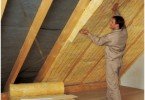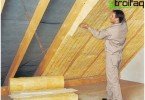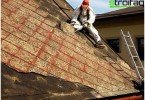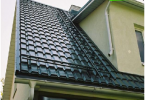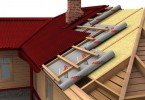Insulation of a flat roof is the most important task with which you can significantly reduce heat loss and, consequently, the cost of electricity. In addition, the heat-insulating layer prevents the appearance of condensate, which allows several times to increase the period of maintenance-free operation of the roof. But that’s not all! Thanks to the insulated roof in rooms located directly below it, a favorable microclimate is created.
Content
- Types of insulation for a flat roof
- Flat roof device
- Installation of mineral wool slabs on a flat roof
- Vapor barrier flooring
- Laying mineral wool boards
- Which mineral wool slabs are best used for a flat roof
Types of insulation for a flat roof
- mineral wool on a basaltic basis (for example, Tekhnoruf 45 or Tekhnoruf 60 from the company “TechnoNikol”), which can be used without a protective screed.
- extruded polystyrene foam (polystyrene foam) is ideal for operating roofs. It perfectly absorbs sounds, but it is combustible and is not recommended for warming soft roofs..
- polyurethane foam – A great option for thermal insulation of the roof. Perfectly applied, non-flammable, does not form seams and gaps.
- ecowool – insulation made from cellulose and treated with flame retardants, which turn a highly flammable material into non-combustible. In stores and construction markets, look for Ecowool, Ecowool, and Unisol brands.
- foam concrete – a new material, which in its solidity and durability resembles concrete, and in structure and weight – foam. An ideal way to insulate a flat roof and not create a significant load on the supporting structures.
Flat roof device
The so-called “pie” of a flat roof consists of the following layers:
- bearing base (concrete, metal profile)
- vapor barrier
- heat insulating layer
- waterproofing
Insulation of the traditional roof with mineral wool is a popular way. The heater in this case is laid under a layer of waterproofing
The sequence of layers may be different if it is planned to equip the inverse roof. In this case, the “pie” will look like this:
- bearing base
- waterproofing membrane
- insulation
- a layer of geotextile or other material with similar characteristics
- crushed stone layer
- topcoat
As you can see, the inversion roof is heavier than traditional and the insulation layer in it is located above the waterproofing layer. This roof option is suitable for those buildings that have high fire safety requirements. And even despite the fact that the waterproofing layer on such roofs, as a rule, is made of combustible materials, mineral wool slabs located under it, act as a kind of fire barrier. Thus, the roof structure is completely fireproof.
It is important that the device of a flat roof – insulation is meant, was made taking into account the loads that may occur during operation. So, for example, for operated roofs, the insulation layer should be both thicker and stronger.
Installation of mineral wool slabs on a flat roof
Vapor barrier flooring
The basis for the installation of basalt mineral wool slabs is either reinforced concrete structures or a metal profiled sheet. Regardless of what type of base the building has, a vapor barrier layer is first laid which prevents water vapor from penetrating under the roof. If you skip this step, then over time the mineral wool will accumulate moisture in itself and cease to play the role of insulation, and the waterproofing layer laid on top of it will “go” with blisters.
For vapor barrier of a flat roof, either classic polyethylene or special surfaced materials, such as bitumen and polymer bitumen, are usually used. The second option is more reliable and efficient, since there are no seams in such a vapor barrier and it is very tear resistant.
Important: the vapor barrier must be laid not only on horizontal surfaces, but also on vertical ones. To start a film or bitumen you need a little higher than the level where the insulation will be located.
Laying mineral wool boards
Insulation for a flat roof, in this case basalt slabs, is laid in one layer, but sometimes, if the thickness calculation made in advance requires, builders can strengthen the thermal insulation with an additional layer of thinner, but no less durable mineral wool slabs. Such a decision is made anyhow, but based on the geographical location of the object, average temperature and humidity indicators in the winter time period, as well as the purpose of the building.
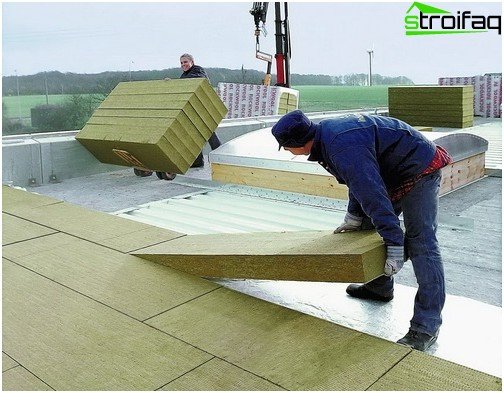
Mineral wool slabs are very light and laying them is not difficult. The main thing is to securely fasten the plates
To fasten the plates to the base, either telescopic dowels or bitumen are used.
The first option is more logical to use when the profiled sheet acts as the base, since it is best to fix the plates to the iron mechanically. In addition, fixing with dowels is much cheaper even if the plates are mounted on concrete. True, dowels for concrete are a little more expensive, and bothering with them longer.
With the mechanical method of attaching mineral wool slabs, the waterproofing layer is fixed in the same way, that is, on the dowels. In this case, you don’t have to worry about the tightness of the roof, since the wide dowel head cannot pierce the waterproofing.
Important: if the mechanical method of attaching mineral wool slabs is chosen, then the vapor barrier should be made of surfaced materials, because only in this case the holes formed when the dowels are driven into the base can be tightened independently.
Bonding to bitumen is a rather laborious and expensive process and it is recommended when laying mineral wool on a concrete base. The technology in this case is as follows: a layer of bitumen is applied to the base, a plate is laid on top of it. The procedure is repeated until the end of the roof. If there is a need for laying the second layer of insulation, then the first layer is coated with bitumen, and the plates are mounted “apart”, that is, so that the plates of the upper layer overlap the joints of the plates of the lower layer. Waterproofing is laid on top of mineral wool on bitumen.
Which mineral wool slabs are best used for a flat roof
Not every type of mineral wool slab is suitable for a flat roof. It is important that the insulation has such strength that it can easily withstand both loads during operation and loads during installation, because builders will walk on it. You can make a screed on the insulation layer, which will distribute the load and create a rigid and durable base for waterproofing flooring. But whatever the screed – dry from slate or asbestos or wet – it in any case significantly complicates the roof structure.
The way out of this situation may be high-strength mineral wool boards from TechnoNikol, which are made using a crimp-prepress, laying fibers both horizontally and vertically.
Flat roof insulation with extruded polystyrene foam
Consider another option for warming a flat roof, which is used for thermal insulation of inverse type roofs.
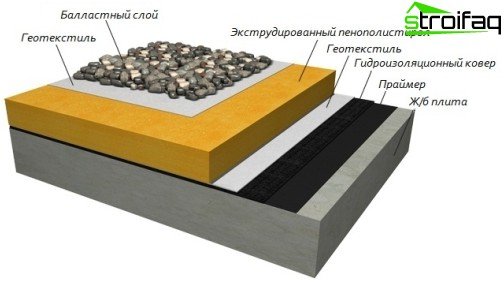
Inverse type roof insulation involves laying a heater on top of the waterproofing layer
Laying the waterproofing layer
The base of the inversion roofs should have a slight slope for water drainage and a smooth surface. You can arrange this with a concrete screed. It is on it that the waterproofing membrane from the deposited material is laid. It is mounted in the same way as in the case of vapor barrier for a traditional roof, that is, with access to the vertical walls of the roof.
Installation of expanded polystyrene plates
Expanded polystyrene plates are equipped with slotted locks, however, for the greatest protection against moisture penetration, all joints must be treated with construction tape. The process of laying polystyrene foam is very simple, the main thing to remember is that the second layer (if necessary) must be mounted apart.
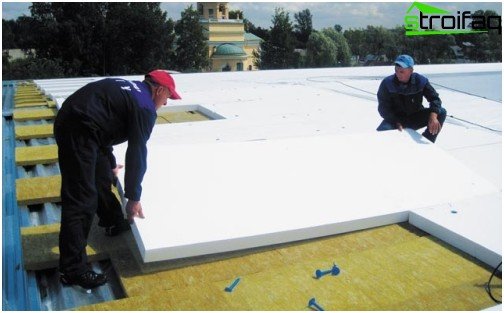
Expanded polystyrene plates are large enough so that during installation they are not damaged, reliable hands of an assistant are needed
Separation layer arrangement
The next layer will be geotextiles, which will protect the lower layers of the roof from mechanical damage and pollution. On top of the geotextile, ballast filling of gravel or crushed stone is performed at least 5 cm thick, and for drainage, a profiled membrane laid between the geotextile and the backfill can be used.
Topcoat
Paving slabs, and asphalt concrete, and foam concrete, and even lawn grass can act as a finishing coating. In the latter case, it is necessary to lay another layer of geotextile on the rubble, and pour about 15-20 cm thick soil on top of it. You can plant both perennial grasses and flower crops.
Warming a flat roof is not an easy task, but having completed it on a solid five, you can be sure that the building will be warm and comfortable. True, for greater reliability, it is also worth insulating the walls..



